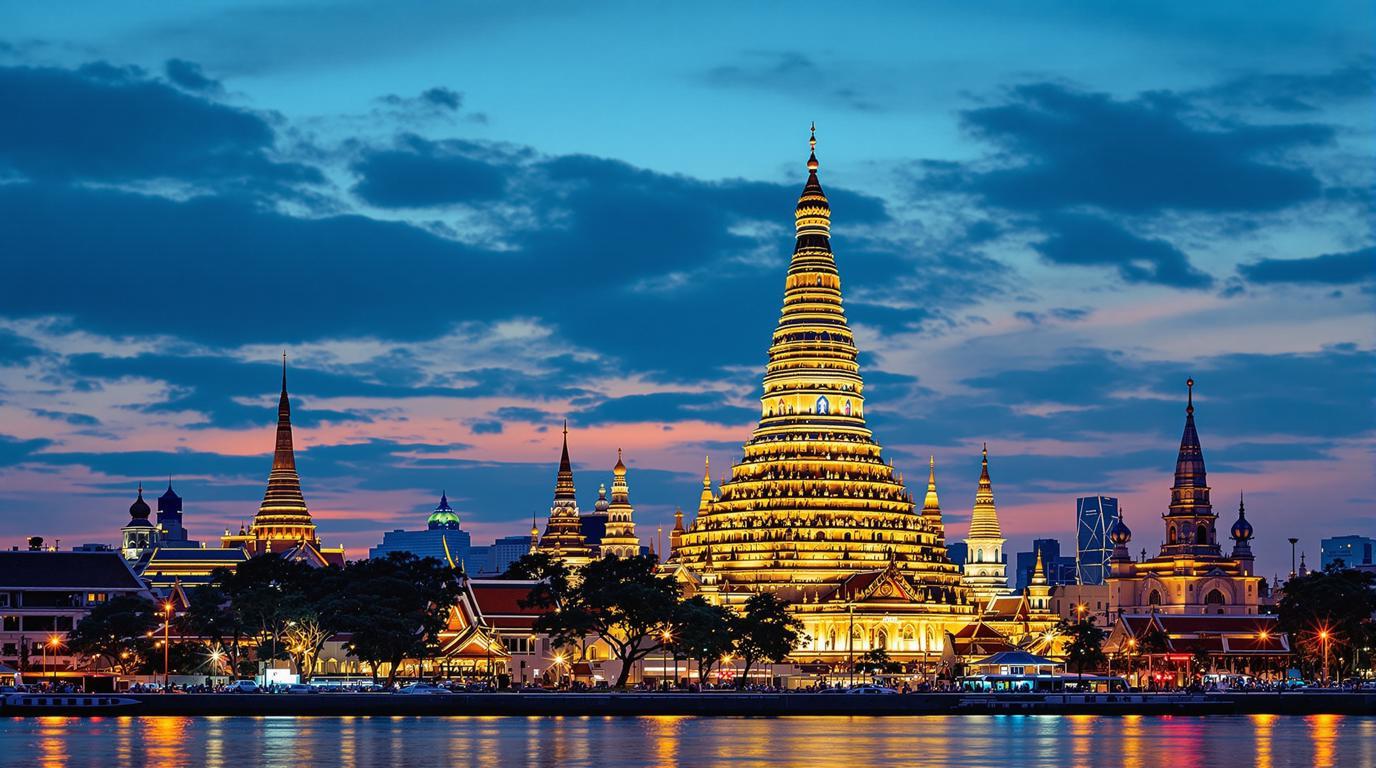Bangkok defies first impressions. At sunrise, saffron-robed monks collect alms along misty alleyways while the scent of jasmine and lemongrass drifts from bustling markets. By nightfall, this same city transforms into a neon wonderland where ancient temples glow against an ultramodern skyline. With over 400 golden wats and the world’s most celebrated street food scene, Bangkok delivers sensory overload in the most delightful way possible.
Bangkok’s dual personality: Sacred and sensational
Few cities balance spirituality and revelry like Bangkok. Morning prayers echo from ornate temples while evening brings a symphony of sizzling woks and clinking glasses. This dichotomy is what makes Bangkok’s 400-year spiritual journey so fascinating – a place where monks scroll on smartphones while ancient rituals continue uninterrupted.
Street food that earned Michelin stars
Bangkok’s culinary landscape isn’t defined by white tablecloths but by plastic stools along bustling sidewalks. At Raan Jay Fai, a 72-year-old chef in ski goggles wok-tosses crab omelets worth their Michelin star. Her $25 signature dish represents the upper echelon of street food that typically costs under $2 per meal.
“Our cooking isn’t fancy – it’s about balance. Sweet meets sour, spicy counters cooling herbs. This is Thailand on a plate,” explains Chef Bee, who conducts street food tours for visitors seeking authentic flavors.
The temple circuit beyond the guidebooks
While tourists crowd Wat Pho and the Grand Palace, locals pray at Wat Suthat, home to Bangkok’s giant swing and remarkably few selfie sticks. At dawn, Wat Arun (Temple of Dawn) offers breathtaking views across the Chao Phraya River with just a handful of photographers capturing its porcelain-encrusted spires.
Khlongs: Bangkok’s forgotten waterways
Before congested highways, Bangkok was “Venice of the East” with hundreds of canal neighborhoods. Today, taking a longtail boat through remaining khlongs reveals stilted homes, floating markets, and monitor lizards sunning on banks – offering a glimpse into pre-skyscraper Bangkok that most visitors miss.
Market madness: Beyond Chatuchak
Chatuchak Weekend Market gets the glory with its 15,000 stalls, but locals prefer Khlong Toei’s raw authenticity or the midnight-to-dawn Pak Khlong Talat flower market. Here, garland-makers thread jasmine buds and marigolds for temple offerings while workers grab $1 boat noodles before dawn.
“Tourists photograph our markets, but they rarely understand what they’re seeing. Each garland tells a story – some for blessings, others for apologies,” notes Khun Malee, a second-generation flower vendor.
Where to escape Bangkok’s intensity
When Bangkok overwhelms, locals retreat to Bang Krachao, an undeveloped jungle island in the city’s center where bicycle paths wind through mango orchards and traditional wooden homes. This “green lung” feels worlds away from downtown yet sits just minutes from skyscrapers.
For travelers yearning for more natural wonders, untouched beaches like those in Seychelles offer similar escapes. Or consider Himalayan treks for a complete change of pace.
Getting around: Avoid the traffic trap
Bangkok’s traffic stagnation is legendary, but savvy travelers use the Skytrain and Express Boats to glide above and around congestion. For longer journeys, consider train travel – Thailand’s emerging rail network offers scenic routes through the countryside.
For culinary adventurers only
While pad thai satisfies most tourists, adventurous eaters seek kanom jeen (fermented rice noodles with curry), pla ra (fermented fish paste), or the notorious durian – a fruit so pungent it’s banned in most hotels. These flavors represent Thailand’s gastronomic heritage much like European regions have their distinct culinary traditions.
Bangkok delivers contradictions with grace: monks blessing Lamborghinis, street food chefs earning international acclaim, and ancient temples shadowed by futuristic architecture. It’s a city where tradition doesn’t just survive modernity – they dance together in perfect harmony, creating an urban experience unlike anywhere else on earth.
